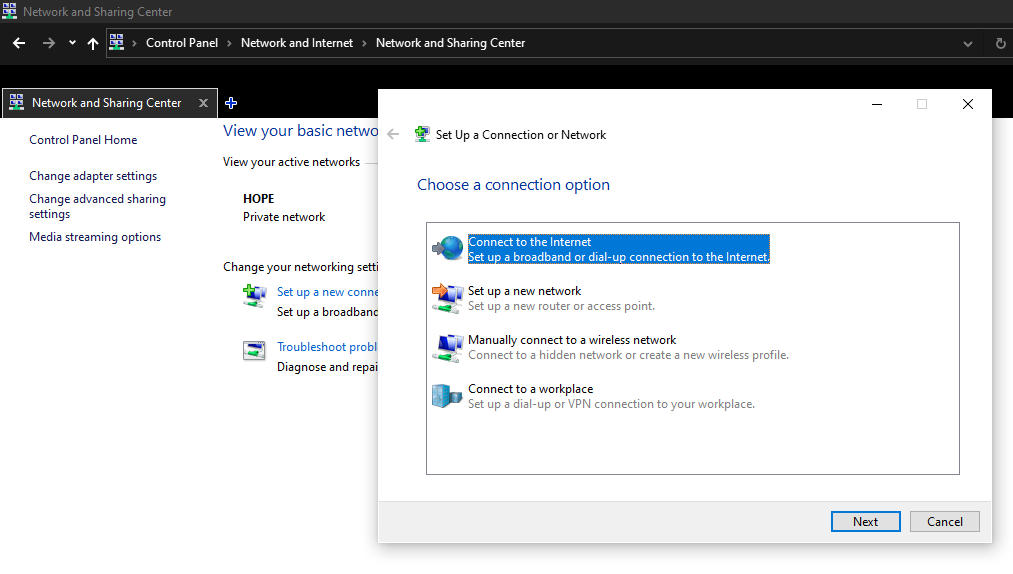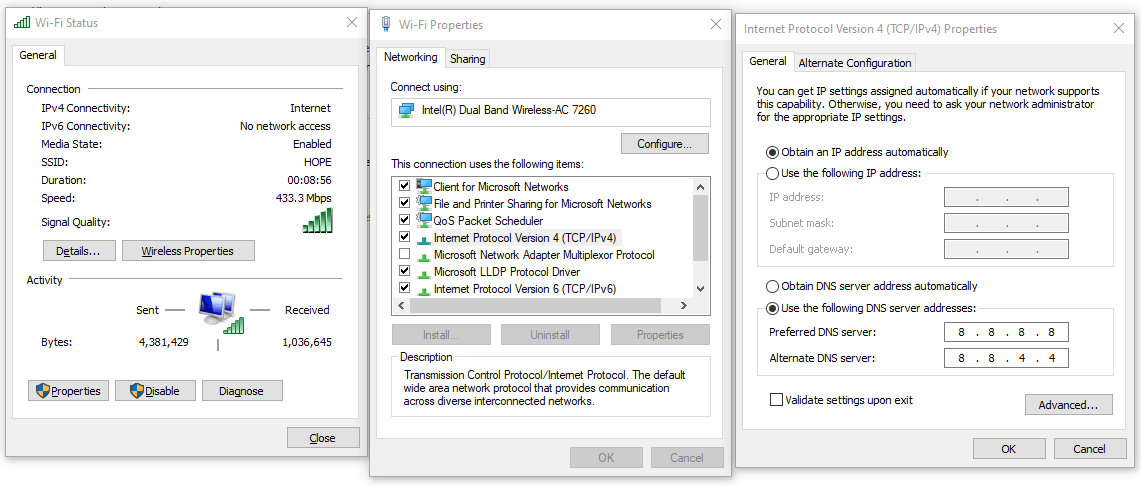- Reset Your Router Now and Then
- Use Ethernet
- Poke and Tweak Data Cap
- Adjust Your DNS Settings
- Deactivate Metered Connections
- Stop Apps from Running in the Background
- Get Rid of Cookies, Trackers, and Ads
- Wipe Out Temporary Files from Primary Drive
- Update Your Drivers
- Use Any Number of Browsers for Your Needs
- Don’t Shy Away from Anti-Malware Packages
- Adjust the Position of Your Router
- Try Alternative Data Plans
- Try Alternative ISPs

It is the year 2022 and continuous technological advancements have ensured that the digital universe is operated at top speed. From operating systems to network connections, practically everything is fast-paced. Nevertheless , there are still many instances where you can be bogged down by an internet connection that is running just a bit more quickly than the sloth from Zootopia.
What should you do when faced with sluggish internet speed? If you are among the many cyberspace users that want to know how to increase internet speed and improve Wi-Fi reception , this article is for you.
You have to realize that any number of things could be responsible for a lag in your internet speed. It might be your Wi-Fi or router configuration, your PC settings, or even your ISP (internet service provider). Regardless, the solutions we have listed below should help you fix the problem.
Reset Your Router Now and Then
If you are worried about the internet speed on your PC, you are most likely using a router. These devices are handy go-betweens that help you manage your data connection and traffic, especially when you have connected multiple devices to the internet. But routers can only do so much before they begin to slow down.
Thus, to keep your router working and providing a top-speed internet connection, you need to reset it now and then. Switch it off for about 5 minutes after every 2 hours of use. You will notice a marked difference in the form of faster internet.
Use Ethernet
Given that you are using the same devices, direct connections to the internet are usually faster than branched connections. For all its renown, wireless connections like Wi-Fi are still a level behind their wired alternative. Thus , if you have access to an Ethernet cable, use it in the place of Wi-Fi and you should see a boost in your internet speed.
To set up an Ethernet connection on your Windows 10 PC, for example, you simply need to do the following:
- Use the Windows key + S combination to search for the Control Panel and tap Enter.
- Select the Network and Internet option from the Control Panel page that pops up.
- Click on the Network and Sharing Center option and select Set up a new connection or network.
- Choose the first option that pops up (Connect to the Internet) and click Next.
- Connect your Ethernet cable to one of the ports on your Windows PC.
- Select Broadband (PPPoE) and type in the info that your ISP has given you, and click OK.

You should be good to go now.
Poke and Tweak Data Cap
Once in a while, your internet connection gets sluggish because you have exceeded your data cap for the month or year. Data caps are essential limits that ISPs set on the volume of data that users can send and receive within a particular period. In essence, once you cross this limit within the period, your ISP cuts you off or limits your internet speed.
The only way to keep on using the internet, if the problem is from your ISP side, is to contact your ISP. You can also immediately renew your subscription if you find out that you have exhausted your data limits. Then you can restart your router to reset internet connection and everything should be working fine.
Adjust Your DNS Settings
In the case in which your ISP is not responsible for slowing down your internet, your DNS (domain name system) might be the issue . Thus, you need to change its configurations to speed things up a notch.
To boost your internet speed using DNS settings, you need to do the following:
- Use the Windows key + S key combination to search for the Control Panel and press Enter.
- Select Network and Internet and then click on the Network and Sharing Center option from the subsequent page.
- Right-click on your Wi-Fi connection option.
- From the Wi-Fi Status page that pops up, click on Properties.
- Navigate to the Internet Protocol Version 4 (TCP/ IPv4) option and click on’Properties’.
- On the page that pops up, click on the Use the following DNS server addresses option and enter 8.8.4.4 in Preferred DNS Server and 8.8.4.4 in Alternate DNS Server.
- Apply the new DNS settings and restart your system.

Deactivate Metered Connections
Another simple means of speeding up your internet is to deactivate your metered connections from the Windows update settings page. What you need to do is the following:
- Get to the Windows update page using the Windows key + R to initiate the Run console.
- Type control update into the console and click OK.
- Select Advanced options and make sure that the Download updates over metered connections option is turned off.
Now, you can restart your PC and check if your internet speed has increased.
Stop Apps from Running in the Background
Background apps also tend to affect internet speed on PCs. However, deactivating them is very simple. All you need to do is:
- Use the Windows key + S combination to search for background apps.
- Click on the appropriate search result.
- Disable the Let apps run in the background option.
Once you have turned off the background apps, initiate the restart process on your Windows PC and check your internet speed afterward.
Get Rid of Cookies, Trackers, and Ads
Similar to the burden that background apps can place on your OS, website cookies and trackers can also drastically slow down your network. Thus, to regain a fast internet speed, you need to get rid of these cookies and trackers.
Clearing cookies and trackers is a simple thing to do. You don’t need to do anything other than search for the option to clear cookies on your browser. Once you have found them , clear them and you can regain your fast internet speed.
Similarly, you can clear out the trackers on your browser by using the Clear Tracker option which is almost certainly one of the main features of your Windows browser. You should do the same for ads since they also clutter up your internet flow and speed.
Wipe Out Temporary Files from Primary Drive
In the spirit of clearing out unnecessary things that drag your internet speed, you should also consider wiping out the temporary files that have accumulated inside your hard drive. Some of these are the remnants of uninstalled programs while others are from old Windows files. Regardless, wiping these out is likely to reduce the load on your network and allow your OS to connect to the internet faster.
All you need to do to wipe out temporary files on your Windows hard drive is initiate the Clean Manager process. The quickest way to achieve this is to do the following :
- Use the Run command by clicking Windows key + R.
- Once the Run console is up, type in cleanmgr and click OK.
- Next, select the Clean up system files option, and tap OK once the process is complete.
This is one of the best solutions on how to increase internet speed.
Update Your Drivers
One of the best advantages of regularly updating your Windows drivers is that you solve problems as slow internet speed without knowing it. For the most part, Windows 10 updates, in particular , remove anything that might stop your OS from running efficiently, including old drivers.
Thus , one of the things you need to do to get faster internet speed is to update your drivers. As earlier mentioned, you can get to the Windows update page by typing control update on the Run console (Windows key + R). This should get your internet up and running fast.
Use Any Number of Browsers for Your Needs
There is no doubt that some internet browsers are a bit quicker than others. This has to do with how well such browsers can efficiently manage the various tabs and windows you have open while you use your PC.
There are many different browsers and each one has its strong points. Google Chrome and Microsoft Edge might be popular but they are not perfect. You can also try Opera, Brave, or even Mozilla Firefox. Keep them as backups if you must, but use them as effectively as you need to. Whichever gives you the best time for feedback is the best fit for you.
Don’t Shy Away from Anti-Malware Packages
Most of what we have already highlighted as capable of overloading your network and consequently slowing it down can come through malware. Some malware programs can attach themselves to your network and become a burden to it. Thus, until you take action, these malicious files or programs will not only wreak havoc on the speed of your OS but also that of your internet.
Without question, the best protection against malware are anti-malware applications. Using one such effective application can save you the trouble of restarting your PC, adjusting the position and configuration of your routers, etc. Thus , try and get an anti-malware software that is up-to-date running on your PC to clear out the network-lagging activities of these malicious things.
Adjust the Position of Your Router
You might want to adjust the position of your router relative to your Windows PC once you notice a lag in your internet speed. This is a simple way out of the problem of slow connections but it is often very effective.
We mentioned this solution in the last suggestion on speeding up your network, but that does not mean that it is not useful. In fact, given how easy it is to do, it should be one of the first options to come to your mind once you find your network is running slowly.
Granted, the idea of wireless networks is to transcend the limitations of wires. But the advantage of using wired networks is that you don’t have to worry about distances and obstructions that might get in the way. Thus, you can simply move your router closer to your PC when you want faster speeds. You would be amazed at how effective an answer this is to questions on how to improve Wi-Fi speed.
Try Alternative Data Plans
Much like the case with data caps, your experiencing slow network speeds might have something to do with your ISP. Thus , you should make sure the data plan you are on does not have limitations related to speed.
This is not a very common occurrence but it is a possibility. Thus , one of the things you want to do once you notice your network is getting slower and slower is to check your data plan. If there is indeed a limitation, switch to a data plan that is not limited in terms of internet speed.
Try Alternative ISPs
Taking it further, the problem might be the ISP itself. Maybe they have a broadband issue or technical problems that might not allow you to connect to the internet faster. In this case, you can either wait for them to resolve their problem or switch to a different ISP.
Thus, make sure to keep an ear out for developments involving your ISP. Once you realize that they are facing issues that could tamper with the stability or speed of your internet connection, get a move on to some other ISP.
All in all, nobody likes slow internet connection when downloading stuff on the internet or just surfing. Thus , as long as you implement some of the solutions highlighted in this article, you will never have to tear out your hair in frustration over slow internet speeds.




 Done! Great to see you among our subscribers!
Done! Great to see you among our subscribers!